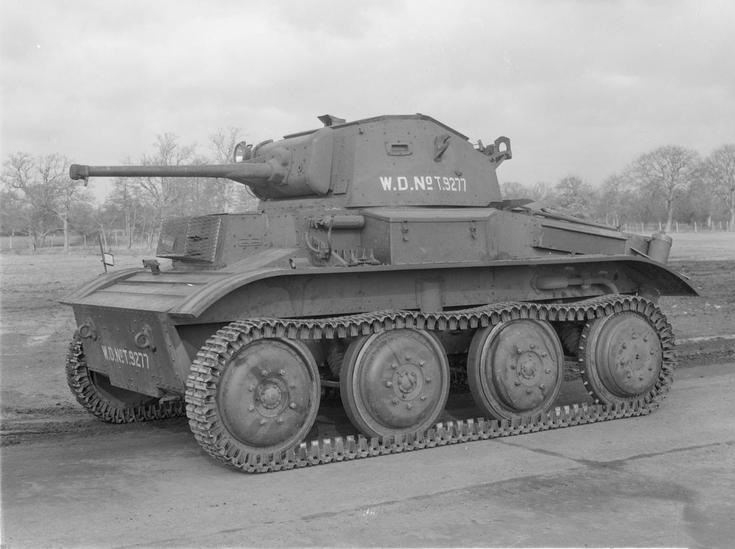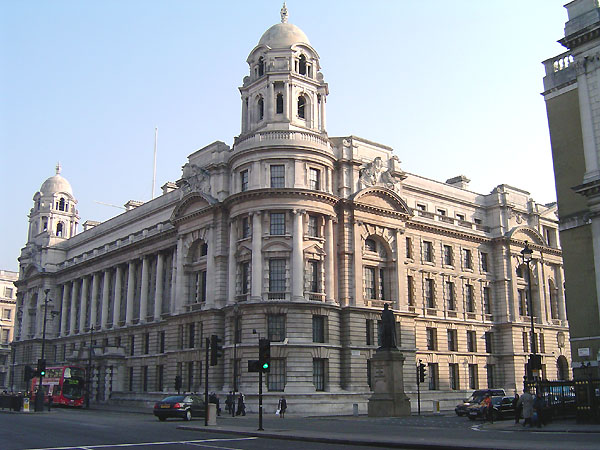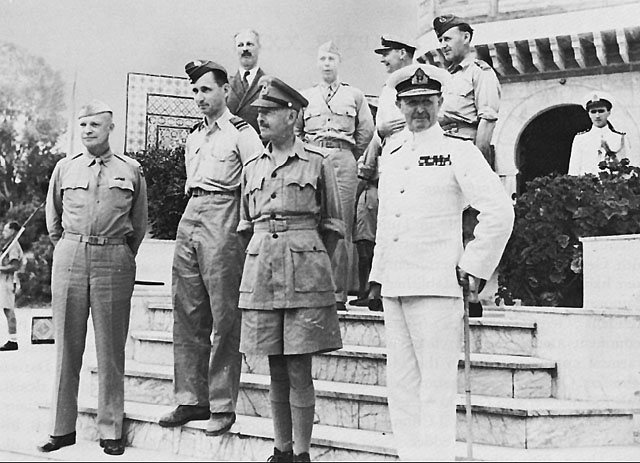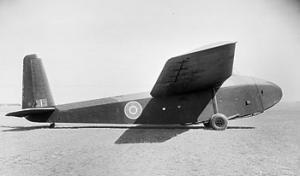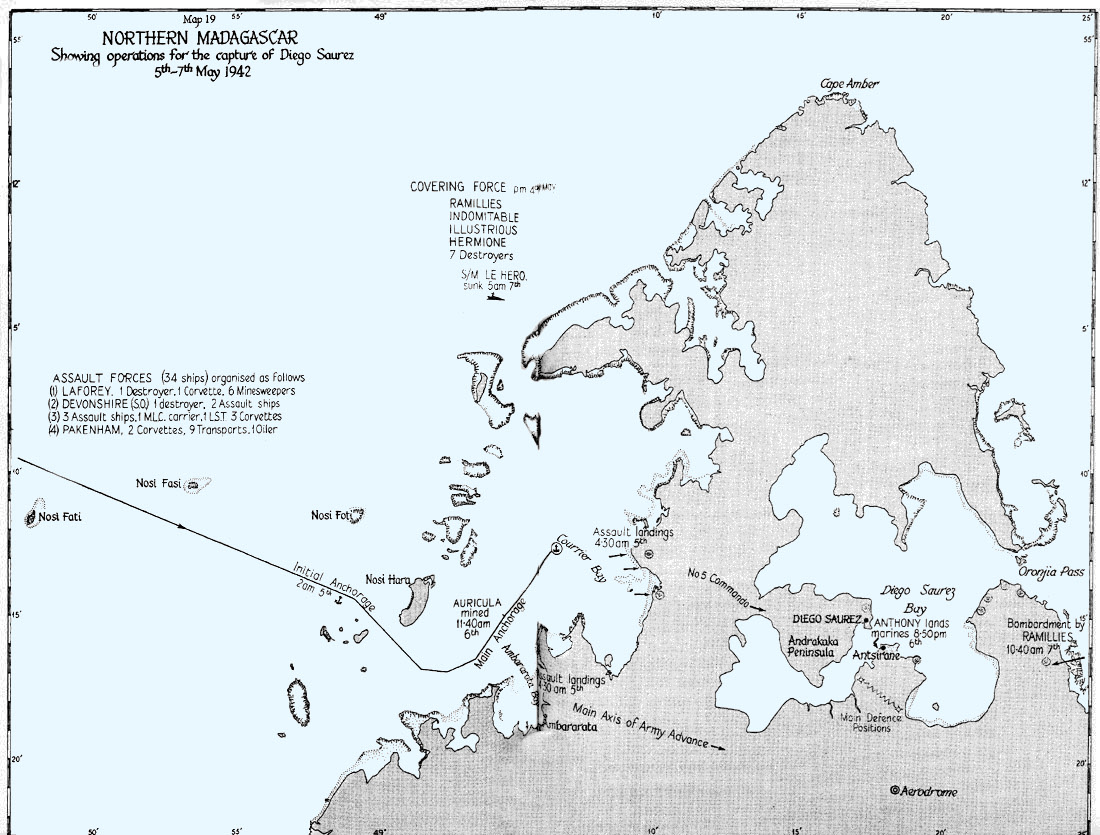|
Mk VII Tetrarch Light Tank
The light tank Mk VII (A17), also known as the Tetrarch, was a British light tank produced by Vickers-Armstrongs in the late 1930s and used during the Second World War. The Tetrarch was the latest in the line of light tanks built by the company for the British Army. It improved upon its predecessor, the Light Tank Mk VIC, by introducing the extra firepower of a 2-pounder gun. The War Office ordered 70 tanks, an order that eventually increased to 220. Production was delayed by several factors and only 100 to 177 of the tanks were produced. The design flaws of the tank, combined with the decision by the War Office not to use light tanks in British armoured divisions, ruled out the use of Tetrarchs in the North African Campaign. The majority of the tanks remained in Britain, although twenty were sent to the USSR as part of Lend-Lease. In early 1941, the Royal Armoured Corps formed three squadrons for use in overseas amphibious operations, one of which was equipped with Tetrarchs ... [...More Info...] [...Related Items...] OR: [Wikipedia] [Google] [Baidu] |
Tetrarch - Light Tank Mark VII
Tetrarch, Tetrarchs, or Tetrarchy may refer to: * Tetrarchy, the four co-emperors of the Roman Empire instituted by the Emperor Diocletian * Portrait of the Four Tetrarchs - a sculpture of the four co-emperors of the Roman Empire * Herodian Tetrarchy, formed by the sons of Herod the Great * Tetrarch, Military rank in ancient Greek armies * ''Tetrarch'' (novel), a 2003 novel by Ian Irvine * Light Tank Mk VII Tetrarch, a British light tank of World War II * The Tetrarch, a Thoroughbred racehorse * The Tetrarchs of Ancient Thessaly under Philip II of Macedon * The Tetrarchs of Galatia in Asia Minor * Tetrarches, a rank in the Byzantine army * ''Tetrarch'', a 1981 fantasy novel by Alex Comfort * Tetrarch (band), a nu metal band from Atlanta, Georgia * Tetrarchy, a subdivision of the Royal Phalanx in 19th-century Greece * HMS ''Tetrarch'' is the name of two vessels that have served in the Royal Navy See also * Tetricus (other), 3rd century rulers of the Gallic Empire *Philip ... [...More Info...] [...Related Items...] OR: [Wikipedia] [Google] [Baidu] |
War Office
The War Office has referred to several British government organisations throughout history, all relating to the army. It was a department of the British Government responsible for the administration of the British Army between 1857 and 1964, at which point its functions were transferred to the new Ministry of Defence (United Kingdom), Ministry of Defence (MoD). This article contains text from this source, which is available under th Open Government Licence v3.0 © Crown copyright It was equivalent to the Admiralty (United Kingdom), Admiralty at that time, which was responsible for the Royal Navy (RN), and (much later) the Air Ministry, which oversaw the Royal Air Force (RAF). The name 'Old War Office' is also given to the former home of the department, located at the junction of Horse Guards Avenue and Whitehall in central London. The landmark building was sold on 1 March 2016 by HM Government for more than British pound, £350 million, on a 250-year lease for conversion int ... [...More Info...] [...Related Items...] OR: [Wikipedia] [Google] [Baidu] |
Operation Tonga
Operation Tonga was the codename given to the airborne operation undertaken by the British 6th Airborne Division between 5 June and 7 June 1944 as a part of Operation Overlord and the D-Day landings during the Second World War. The paratroopers and glider-borne airborne troops of the division, commanded by Major-General Richard Nelson Gale, landed on the eastern flank of the invasion area, near to the city of Caen, tasked with a number of objectives. The division was to capture two strategically important bridges over the Caen Canal and Orne River which were to be used by Allied ground forces to advance once the seaborne landings had taken place, destroy several other bridges to deny their use to the Germans and secure several important villages. The division was also assigned the task of assaulting and destroying the Merville Gun Battery, an artillery battery that Allied intelligence believed housed a number of heavy artillery pieces, which could bombard the nearest ... [...More Info...] [...Related Items...] OR: [Wikipedia] [Google] [Baidu] |
6th Airborne Division (United Kingdom)
The 6th Airborne Division was an airborne infantry division of the British Army during the Second World War. Despite its name, the 6th was actually the second of two airborne divisions raised by the British Army during the war, the other being the 1st Airborne Division. The 6th Airborne Division was formed in the Second World War, in mid-1943, and was commanded by Major-General Richard N. Gale. The division consisted of the 3rd and 5th Parachute Brigades along with the 6th Airlanding Brigade and supporting units. The division's initial operation, which also resulted in it becoming the first Allied unit to land its troops in France as part of Operation Overlord, was Operation Tonga on 6 June 1944, D-Day, part of the Normandy landings, where it was responsible for securing the left flank of the Allied invasion. Having successfully carried out this task the division remained in Normandy for three months before being withdrawn in September. The division was entrained day a ... [...More Info...] [...Related Items...] OR: [Wikipedia] [Google] [Baidu] |
Allied Invasion Of Sicily
The Allied invasion of Sicily, also known as the Battle of Sicily and Operation Husky, was a major campaign of World War II in which the Allies of World War II, Allied forces invaded the island of Sicily in July 1943 and took it from the Axis powers, Axis forces (Kingdom of Italy and Nazi Germany). It began with a large Amphibious warfare, amphibious and airborne forces, airborne Military operation, operation, followed by a six-week land campaign, and initiated the Italian campaign (World War II), Italian campaign. To divert some of the Axis forces to other areas, the Allies engaged in several deception operations, the most famous and successful of which was Operation Mincemeat. Husky began on the night of 9–10 July 1943 and ended on 17 August. Strategically, Husky achieved the goals set out for it by Allied planners: the Allies drove Axis air, land and naval forces from the island, and the Mediterranean Sea, Mediterranean sea lanes were opened for Allied merchant ships for th ... [...More Info...] [...Related Items...] OR: [Wikipedia] [Google] [Baidu] |
M22 Locust
The M22 Locust, officially Light Tank (Airborne), M22, was an American-designed airborne light tank which was produced during World War II. The Locust began development in 1941 after the British War Office requested that the American government design a purpose-built airborne light tank which could be transported by glider into battle to support British airborne forces. The War Office had originally selected the Light Tank Mark VII Tetrarch light tank for use by the airborne forces, but it had not been designed with that exact purpose in mind so the War Office believed that a purpose-built tank would be required to replace it. The United States Army Ordnance Department was asked to produce this replacement, which in turn selected Marmon-Herrington to design and build a prototype airborne tank in May 1941. The prototype was designated the Light Tank T9 (Airborne), and was designed so that it could be transported underneath a Douglas C-54 Skymaster transport aircraft; its dimen ... [...More Info...] [...Related Items...] OR: [Wikipedia] [Google] [Baidu] |
General Aircraft Hamilcar
The General Aircraft Limited GAL.49 Hamilcar or Hamilcar Mark I was a large British Military gliders, military glider produced during the Second World War, which was designed to carry heavy cargo, such as the Light Tank Mk VII Tetrarch, Tetrarch or M22 Locust light tank. When the British airborne forces, airborne establishment was formed in 1940 by the order of Prime Minister of the United Kingdom, Prime Minister Winston Churchill it was decided to develop a large glider which would be able to transport heavy equipment in support of airborne troops. General Aircraft Limited were chosen in January 1941 to develop this glider, which they designated the GAL.49 'Hamilcar'. It was designed to transport a light tank or two Universal Carriers. Problems, which included vacillation by the War Office on the number of gliders it wanted and poor management by GAL, led to delays in the production of the Hamilcar and it was not until mid-1943 that the first production glider was assembled. T ... [...More Info...] [...Related Items...] OR: [Wikipedia] [Google] [Baidu] |
Airborne Forces
Airborne forces are ground combat units carried by aircraft and airdropped into battle zones, typically by parachute drop. Parachute-qualified infantry and support personnel serving in airborne units are also known as paratroopers. The main advantage of airborne forces is their ability to be deployed into combat zones without a land passage, as long as the airspace is accessible. Formations of airborne forces are limited only by the number and size of their transport aircraft; a sizeable force can appear "out of the sky" behind enemy lines in merely hours if not minutes, an action known as ''vertical envelopment''. Airborne forces typically lack enough supplies for prolonged combat and so they are used for establishing an airhead to bring in larger forces before carrying out other combat objectives. Some infantry fighting vehicles have also been modified for paradropping with infantry to provide heavier firepower. Protocol I of the Geneva Conventions protects parachutis ... [...More Info...] [...Related Items...] OR: [Wikipedia] [Google] [Baidu] |
1st Airborne Division (United Kingdom)
The 1st Airborne Division was an airborne infantry division of the British Army during the Second World War. The division was formed in late 1941 during the Second World War, after the British Prime Minister, Winston Churchill, demanded an airborne force, and was initially under command of Major General Frederick A. M. "Boy" Browning. The division was one of two airborne divisions raised by the British Army during the war, with the other being the 6th Airborne Division, created in May 1943, using former units of the 1st Airborne Division. The division's first two missions—Operation Biting, a parachute landing in France, and Operation Freshman, a glider mission in Norway—were both raids. Part of the division was sent to North Africa at the end of 1942, where it fought in an infantry role during the Tunisian campaign over the next few weeks, and when the Allies invaded Sicily in July 1943, the division undertook two brigade sized landings. The first, Operation Ladbr ... [...More Info...] [...Related Items...] OR: [Wikipedia] [Google] [Baidu] |
Operation Ironclad
The Battle of Madagascar (5 May – 6 November 1942) was an Allied campaign to capture the Vichy French-controlled island Madagascar during World War II. The seizure of the island by the British was to deny Madagascar's ports to the Imperial Japanese Navy and to prevent the loss or impairment of the Allied shipping routes to India, Australia and Southeast Asia. It began with Operation Ironclad, the seizure of the port of Diego-Suarez (now Antsiranana) near the northern tip of the island, on 5 May 1942. A campaign to secure the rest of the island, Operations Stream, Line and Jane, was opened on 10 September. The Allies broke into the interior, linking up with forces on the coast and secured the island by the end of October. Fighting ceased and an armistice was granted on 6 November. This was the first big operation by the Allies combining sea, land and air forces. The island was placed under Free French control. Background Geopolitical Diego-Suarez is a large bay, with a ... [...More Info...] [...Related Items...] OR: [Wikipedia] [Google] [Baidu] |
Squadron (army)
A squadron was historically a cavalry Subunit (military), subunit, a Company (military unit), company- or battalion-sized military formation. The term is still used to refer to modern cavalry Unit (military), units, and is also used by other military branch, arms and services (frequently Squadron (aviation), aviation, also Squadron (naval), naval). In some countries, including Italian Army, Italy, the name of the battalion-level cavalry unit translates as "''Squadron Group''". United States In the modern United States Army, a squadron is an armored cavalry, air cavalry, or other reconnaissance unit whose organizational role parallels that of a battalion and is commanded by a Lieutenant colonel (United States), lieutenant colonel. Prior to the revisions in the US Army structure in the 1880s, US Cavalry regiments were divided into Company (military unit), companies, and the battalion was an administrative designation used only in garrison. The reorganizations converted compani ... [...More Info...] [...Related Items...] OR: [Wikipedia] [Google] [Baidu] |
Royal Armoured Corps
The Royal Armoured Corps is the armoured arm of the British Army, that together with the Household Cavalry provides its armour capability, with vehicles such as the Challenger 2 and the Warrior tracked armoured vehicle. It includes most of the Army's armoured regiments, both the Royal Tank Regiment and those converted from old Cavalry regiments of the British Army, horse cavalry regiments.Forty p. 63. In September 2024, it comprised fourteen regiments: ten Regular Regiments; four Army Reserve (United Kingdom), Army Reserve. Although the Household Cavalry Regiment (the Life Guards (United Kingdom), Life Guards and the Blues and Royals) provide an armoured regiment, they are not part of the RAC. History The RAC was created on 4 April 1939, just before World War II started, by combining regiments from the List of British Army regiments (1881)#Cavalry of the Line, cavalry of the line which had mechanised with the Royal Tank Corps (renamed Royal Tank Regiment). As the war went on and ... [...More Info...] [...Related Items...] OR: [Wikipedia] [Google] [Baidu] |
